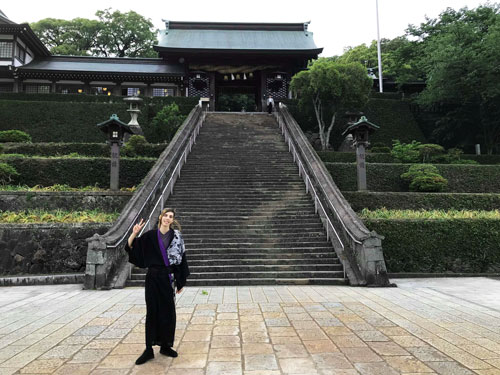In the prefecture of Nagasaki, there is a Shinto shrine of great historical importance. Its name is Suwa Shrine.

Founding of Suwa Shrine
This sanctuary was founded in 1614 under the order of the Tokugawa shogun as a way to expel the Christian faith from the region. During the Edo period, Nagasaki was one of the few places where there was contact with foreigners. Missionaries from Portugal and Spain began to spread the Christian faith from this region to the rest of Japan. But soon, the Tokugawa shogun in charge banned Christianity and started to expel the missionaries. Nevertheless, Nagasaki is currently still the place where more churches can be found compared to the rest of Japan.
The shogun founded the Suwa Shrine and made it mandatory that all Nagasaki residents participate in the sanctuary festivals. Those who did not show up were interrogated, and if it was discovered that they were Christians they could go to jail or even be executed. Beyond the Christian persecution, the Suwa sanctuary flourished to become a center for citizens to meet.
The Shrine in the Modern Era
At the beginning of the Meiji Era, the Suwa shrine entered the list of important sanctuaries in the country. The Meiji Era also saw the end to the persecution of Christians, giving way to building churches in Nagasaki. On August 9, 1945, the Americans dropped their second atomic bomb in Nagasaki three days after they dropped the first on Hiroshima, destroying a large part of the city in its path.
When the atomic bomb fell, most churches were completely destroyed. Survivors ran to see if the Suwa sanctuary had also disappeared, but it did not. Due to its strategic position, the Suwa Shrine was not damaged. To the Japanese, this was seen as symbolic of the power of the native Gods over an imported God. The priests of the sanctuaries had an arduous job purifying the entire city after the bombing. Every August 9th, a commemorative act is held to pray for the lost lives.
Today’s Shrine
To get to the Suwa sanctuary, you have to climb 277 steps of stairs. Upon reaching the top you can see the entire city of Nagasaki, a truly spectacular view. The sanctuary is a very beautiful and imposing structure. The building is made up of other small sanctuaries that are worth walking through. Another interesting fact is that the first ‘omikuji’ (fortune-telling paper) in English was distributed in this sanctuary. If you want to connect with history and take a look at ancient Nagasaki, visiting the Suwa shrine is a great choice.
Your Japan Tour
As seasoned Japan experts, we create perfect Japan package tours including destinations like Nagasaki. Check out our group tours and private tours, or contact us to start planning your unforgettable holiday to this fascinating country full of once-in-a-lifetime experiences, culture, history, nature, and delicious food!
Access Information
Access :
From Suwa-Jinja tram station